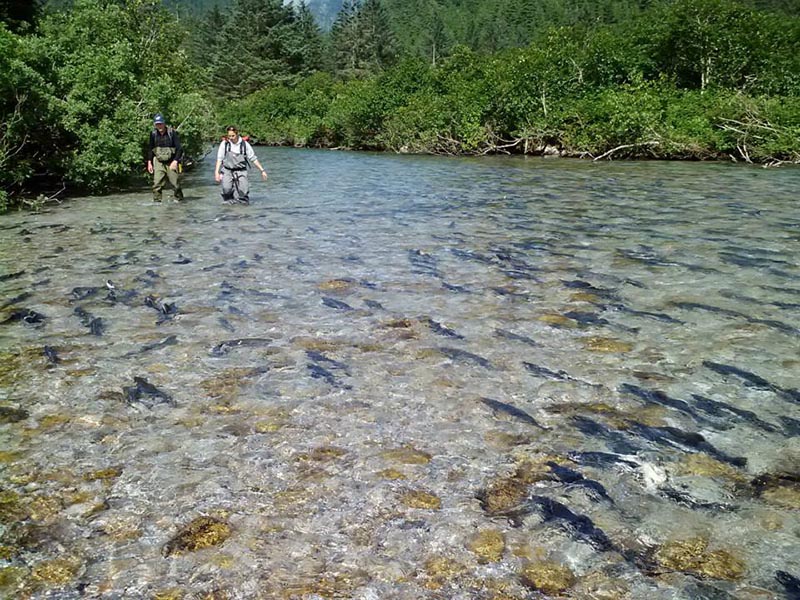I arrived in Cordova, Alaska, on Thursday May 18, at the close of the first day of salmon fishing. I reached town early enough in the evening to see a heart-warming flood of boats heading back to the home harbor. I grabbed the opportunity to visit the Reluctant Fisherman and catch a FisherPoets performance before I buckled down to get an objective analysis of the emergency Prince William Sound Salmon Harvest Task Force meeting early Saturday morning.
The Saturday meeting was the most moving, with more than 150 people crowded into the Cordova Center for a meeting to discuss the effects of potential Copper River king salmon restrictions on the summer sockeye season. The Alaska Department of Fish & Game’s 2017 Copper River king salmon forecast is very low at only 29,000 fish, and the department created a preseason adjustment to the closed water line inside the Copper River barrier islands.

Scott Kelley
Scott Kelley, director of the Commercial Fisheries Division with ADF&G, facilitated communication at an unusually casual yet effective meeting. The Prince William Sound drift fleet, Cordova locals and other fishermen are certainly concerned about the status of the king salmon forecast for the Copper River and are not hesitant to share opinions.
“I’ve never seen anything like the kind of participation level here today,” Kelley said. “And I really enjoy it.” As a semi-outsider, I was very pleased to see how accommodating the event was in allowing fishermen to articulate their concerns.
The meeting started with the Prince William Sound Harvest Task Force members discussing voting criteria and making an immediate decision to change the criteria from unanimous to majority vote. The task force has a large membership — 14 organizational representatives at present — and there was some discussion about whether or not to increase that number for representation and how that might affect task force productivity.
As for the current king salmon issue, it seemed there was no question that this is the biggest issue the group has faced post-Exxon Valdez oil spill, and the locals are clearly anxious about how to take action.
“We welcome that fishermen have a special knowledge of how the fishery is occurring that management does not,” said Fish and Game Commissioner Sam Cotten. “And we need an efficient way to collect that information.”
One of the first audience comments from United Fishermen of Alaska’s Jerry McCune was that the shocking 2017 ADF&G forecast regarding low king salmon returns has already started a huge “forest fire” conflict and tension with inside water subsistence and sport fishermen and the commercial fleet. Other commenters appeared to agree. ADF&G’s 2017 king salmon prediction is going to create an enormous divergence between user groups, and that’s not a positive situation for any of the communities located along the Copper River and its tributaries.
The king salmon prediction is going to continue to cause tension throughout the season. If it forces a closure for the commercial fleet targeting sockeye salmon, it will devastate the occupational period for the fleet. If it doesn’t close, the differing community opinions will feed the fight over who should have access to the fish.
The drift fishery opened again at 7 a.m. on Monday, May 22, and closed 12 hours later. We’ll see how this one turns out. I’m not on the dock this time, but I’m sure rumors will be all about the community discussion as soon as the boats are streaming back to the harbor.







